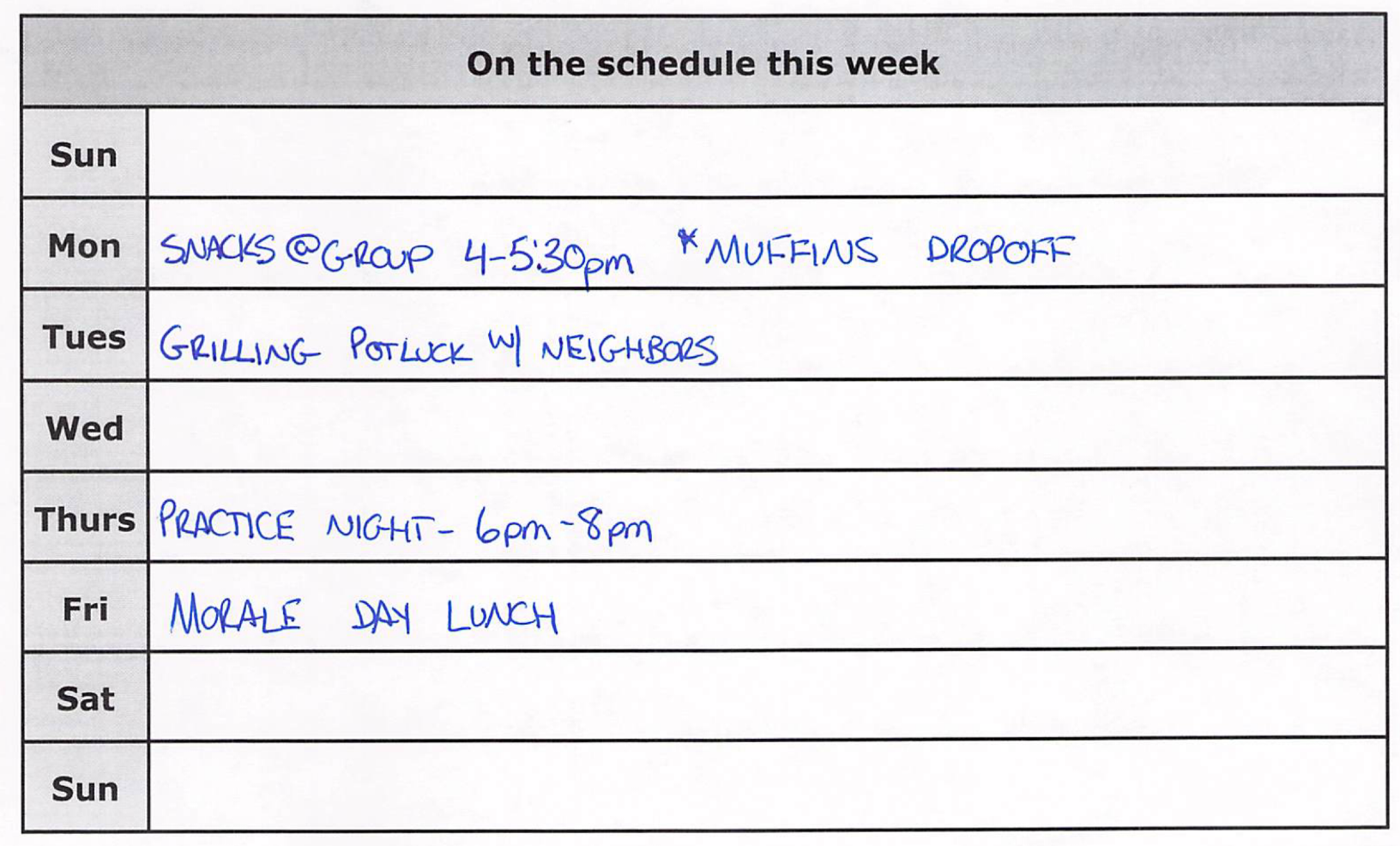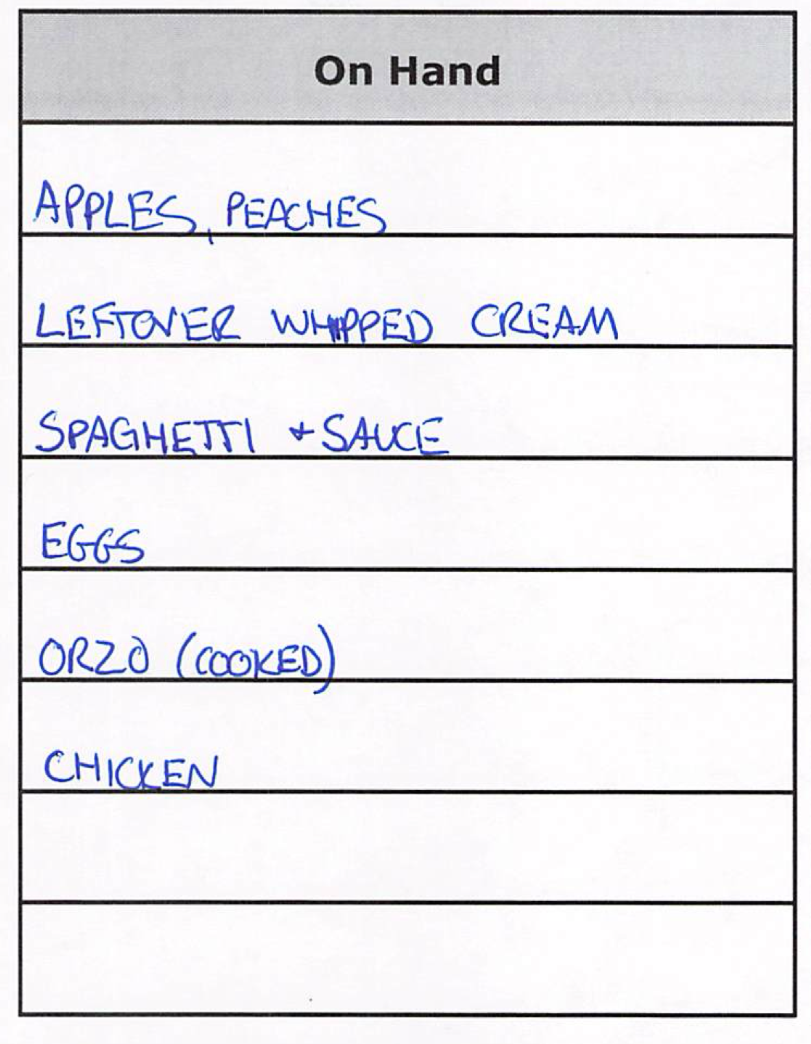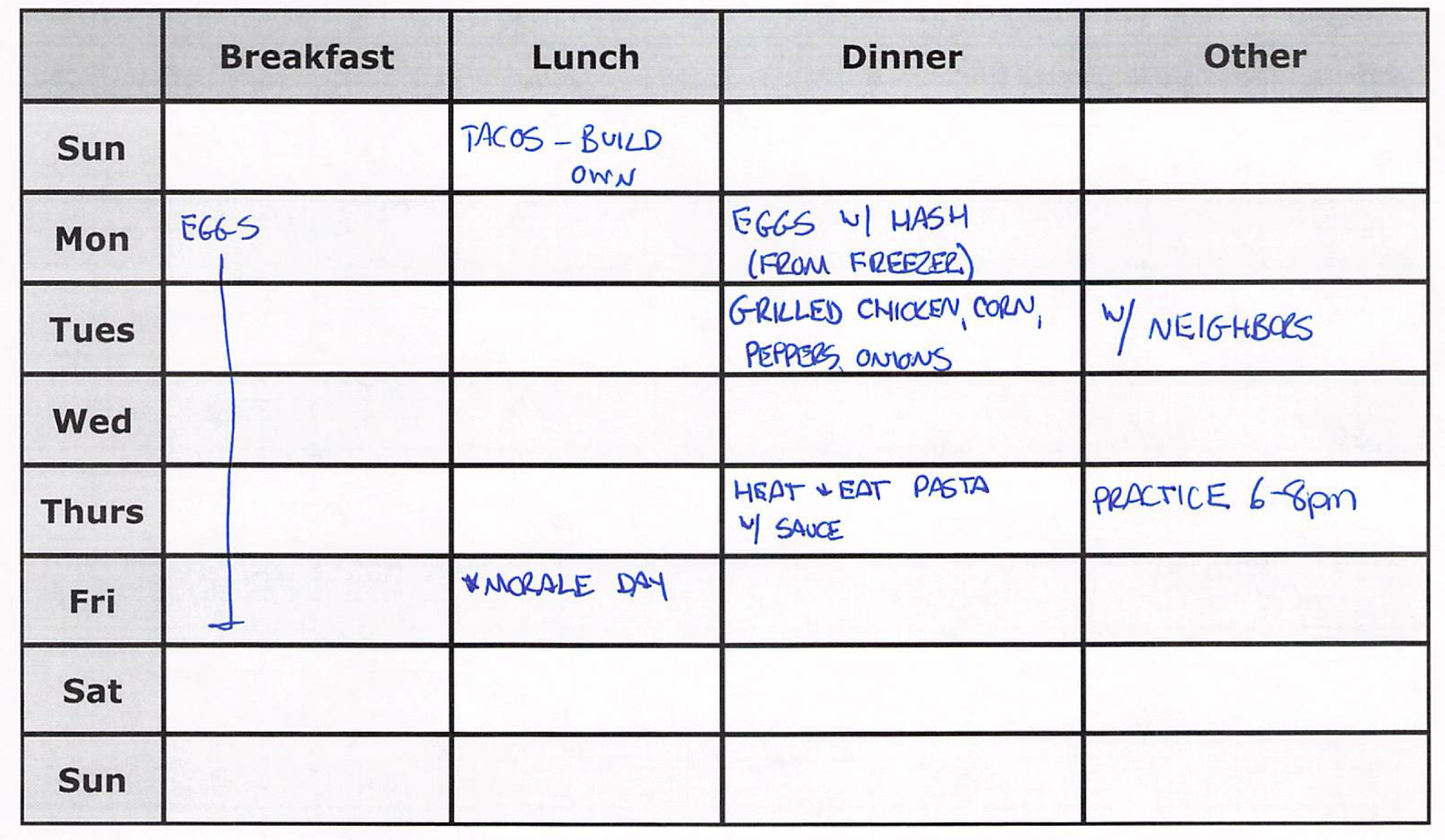Food planning
What is food planning and how is it different from meal prepping?
I like to think of what I do for my household as “food planning” rather than meal prepping for two main reasons:
- Food is more than meals
- Meal prepping implies a heat & eat level of pre-preparation
If you prefer to think of it as meal prepping, call it that! Meal prepping, food planning, batch cooking, make-ahead meals, whatever term feels most comfortable and appropriate for the level of planning and pre-work fits best for you. This could be anything from an outline to everything pre-made! Maybe that’s different levels of pre-work for different meals, different people, or different weeks. If making dinner every night is something that brings you joy and fits your schedule and routine, there is zero pressure here to change that. If managing food is something you want to make a little easier, you’re absolutely in the right place! And both can be true — food planning is about more than just dinner.
Let’s jump in! Check out my food planner here or grab your favorite planning tool — pencil and blank paper, pen and a notebook, something digital, a printout of a weekly calendar, whatever helps you feel inspired and ready to tackle this challenge.
Step 1:
List out the people, meals, and snacks that are your responsibility (shared or individual) for the upcoming week. Whether your week runs Sunday-Saturday, Friday-Thursday, Monday-Sunday, pick a starting day and jot down your people (including yourself!), meals, and snacks. This can be more of a guideline or it can be super specific depending on what fits your style best. Hosting dinner for friends on Tuesday? Count them in the plan! Is Friday morale day at work and lunch is being planned by someone else? Jot it down! Is it your kid’s turn to bring snacks to the group project meeting on Monday? How about snacks for yourself? Try also to include food you make for others semi-regularly, like if you bring egg bites to a friend or family member to make their mornings easier.

Step 2:
List out what you already have on hand with a focus on perishable items. This includes things that are currently in your fridge, things on the counter or in the pantry, maybe it’s leftovers maybe it’s produce, anything that is on hand and could go bad. Depending on what is on this list there may be some work already done! Where these fit into your plan is entirely up to you — leftovers for lunch? Mix together two components and add eggs for a simple prep dinner? Does someone on your responsibility list love cold spaghetti for breakfast? Keep these ideas in mind for an upcoming step.

Step 3:
List out any ideas you have for what you want to make. Family favorite recipe that fits perfectly with something you found in step 2? Awesome! Saw a new recipe that sounds exciting? Great! Idea as vague as “use celery in fridge”? That counts! Jot down your ideas here.
Step 4:
Start filling in your day & meal blocks. Continuing the examples above, it might look something like this to start

As you add the already planned meals, this may start to narrow down what options fit on other days. Leftovers from Tuesday could be a quick reheat or remix option on Thursday, the lunch plans on Friday could impact dinner plans, Monday’s group project meeting could impact how much time is available to prepare dinner. Let the blocks filled out early guide the others: which nights are for cooking, which meals have a time or energy constraint, what leftovers are likely to be available. How this looks will be unique to you and your household! There may be blocks that you don’t feel the need to fill out, maybe lunch is on autopilot and you’d rather not take the time to write in the same thing every day. Maybe some days are on autopilot and some benefit from planning. Maybe your leftovers become breakfast food! Whatever your plan looks like, the important part is that it works for you and the people you feed.
Step 5:
Check your plan against time, energy, and fridge space. If Tuesday’s plan requires a whole shelf to hold components that will be partially prepped that morning, does that change your plan for Sunday or Monday? Does Thursday include an activity that means a later than usual or a more tired than usual return home? Planning for these days can help you create the kind of food experience you want to give to your people. If it’s important to you that everyone eat together at the table, what fits into the available time and energy on Thursday?
If you’re interested, read more about time and energy budgets here
Step 6:
Make your grocery list, taking time to check supply levels of pantry staples like salt, oil, seasonings, etc. It can be helpful to include quantities, especially for items used in multiple recipes.
Step 7:
Check your plan for completeness. Is anything missing? Do you have snacks included in your plan or on your shopping list?
Step 8:
Enact your plan! You’ve set some plans, you’ve checked your list, now it’s time to try it out! Especially if this is new to you, make notes for yourself about what worked and what didn’t. If you’re trying this out because you feel overwhelmed, one week of this may not be enough to start shifting that feeling. Learning and trying a new approach may not feel like a magical answer, but I hope the investment you put into planning your week pays off throughout that week with fewer scrambles to prepare meals, less stress managing snacks, and less mental energy spent day-to-day on managing food for you and your loved ones.
Read more about snacks and why they’re mentioned so much here